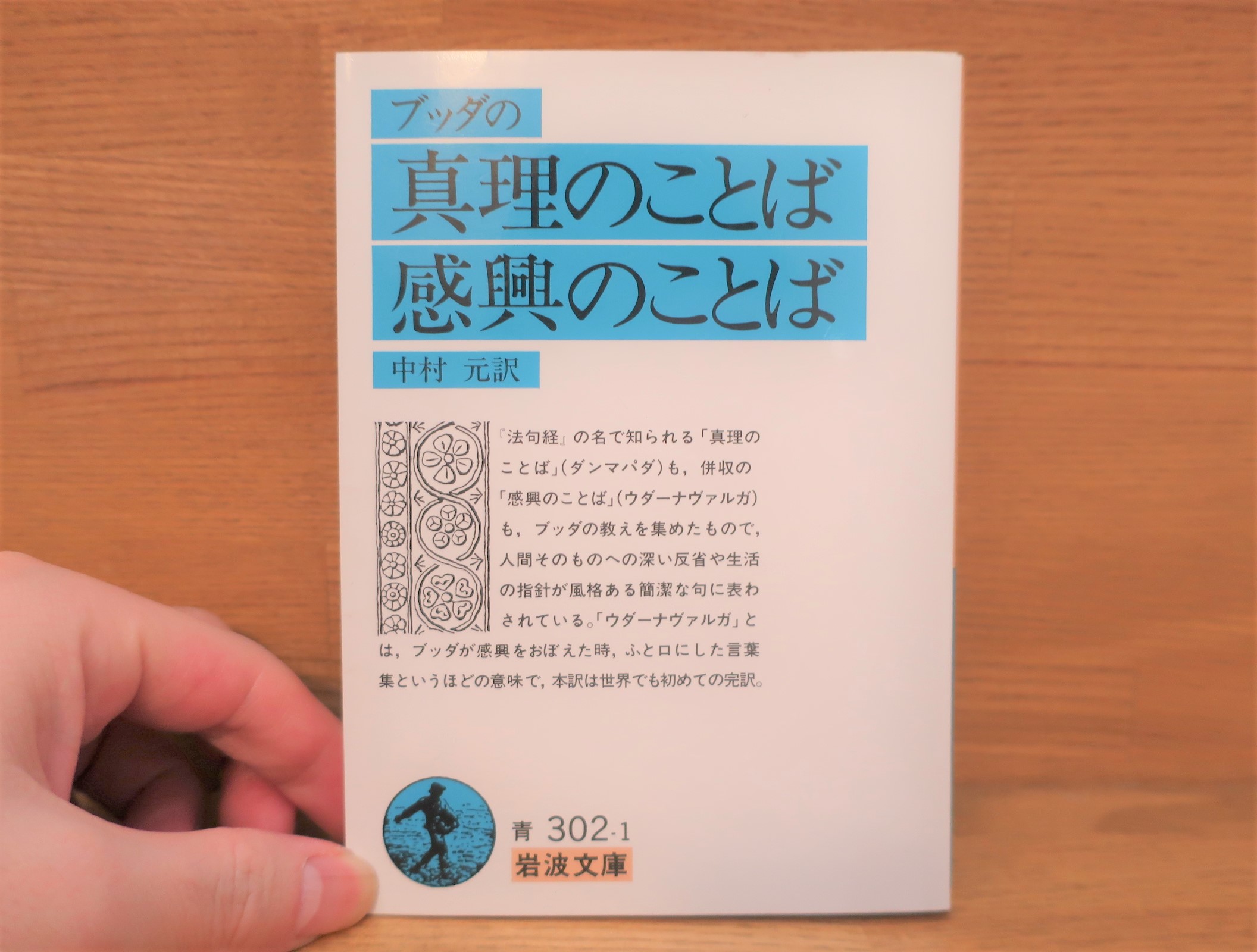Summary and Comments on Hajime Nakamura's translation of Buddha's Words of Truth - If you want to know the essence of primitive Buddhism in a concise and heartfelt way, this is the book for you!
Previously on.SchopenhauerandChekhovWe spoke about the
Schopenhauer was a philosopher who was strongly influenced by Buddhism.
Schopenhauer's strong interest was in the teachings of the earliest Buddhism, known as primitive Buddhism.
The "Buddha's Words of Truth," which I will be introducing in this issue, was previously introduced in my blog.Buddha's Words.It is a sutra from the same period as the "Buddha's Sayings. In that article, I spoke about "Buddha's Words" as follows.
Buddhism is a teaching preached by the Buddha some 2,500 years ago.
One of the oldest sutras, the Buddha's Words ("Sthanipata") is said to be the closest to the teachings actually preached by the Buddha at the time of his death.
In fact, when the Buddha lived, it was not yet possible to preserve sutras in written form.
At that time, the form of recitation of the teachings given by the Buddha was in the form of poems and rhymes. It is said that in this way, the teachings were passed down from generation to generation among the disciples.
Some time after the Buddha's death, however, the question arose as to how his teachings should be transmitted to future generations and how to do so accurately and without error.
There, a group of renowned disciples rallied together to officially compile the Buddha's teachings into a sutra.
One of the resulting sutras is the "Sthanipata" (translated into Japanese as "Buddha's sayings").
In other words, the Buddha's Words is the earliest compilation of the Buddha's teachings in the form of sutras.
This is the reason why the Buddha's sayings are said to be the closest to what the Buddha actually taught.
Listening to the Buddha's Words: Hajime Nakamura's Translation of Buddha's Words.
The sutra we are about to read, "Buddha's Words of Truth," was created in exactly the same way.
What is "The Word of Truth"?
Let us look at this "Buddha's Word of Truth" immediately.
Both the "Words of Truth" (Dhammapada), known as the Dhammapada Sutra, and the "Words of Inspiration" (Udhanavarga), also included in this book, are a collection of Buddha's teachings, expressing deep reflections on humanity itself and guidelines for life in elegant, concise phrases. Udhanavarga" means "a collection of words uttered by the Buddha when he was deeply moved.
AmazonProducts Page.
Nakamura, the translator, further explains this sutra as follows
The Dhammapada is probably the most famous of all the Buddhist scriptures written in the Pali language. It is now included in the Pāli Mahāyāna Sutra and has been transmitted throughout South Asia. The word "Dhamma" is translated as "Dharma," meaning human truth, and "Pada" means "word. In modern language, it is often translated as "the word of truth. (omitted).
This book corresponds to the Chinese translation of the Dhammapada. The original title "Dhammapada" does not contain the character for "sutra," but because it was treated as a sutra, the Sinologists specifically added the character for "sutra" to give it the name "Dhammapada Sutra.
Iwanami Shoten, Nakamura Gen's translation, Buddha's Words of Truth and Inspiration, p. 373
The original title of the sutra "The Word of Truth" is "Dhammapada," and the Chinese translation is known as the "Dhammapada Sutra.
Perhaps the names "Dhammapada" or "Dhammapada" or "Dhammapada Sutra" are more familiar to many people than the name "The Word of Truth.
The Dhammapada is a penetrating reflection on mankind itself and a guiding teaching for living. For this reason, it has become a favorite of people throughout the world.
Originally revered and recited in South Asian countries, it has become well known in Western countries through translation in modern times, and is the most frequently translated Buddhist scripture into Western languages. In Japan, several translations were published during the Taisho period (1912-1926), and it was not until the Showa period (1926-1989) that it began to be widely read.
Nami Shoten, Nakamura Gen's translation of Buddha's Words of Truth and Inspiration, p. 373-374.
As Gen Nakamura states here, this sutra became very popular in Western countries as well. One of them is Schopenhauer, whom I have mentioned in previous articles.
The "Words of Truth" is a more readable sutra than "Buddha's Words," which was previously introduced.
That said, "Buddha's Words" was a bit difficult to read as an introduction to the sutra, as there are many philosophical passages that are quite difficult to read without knowledge of the sutra.
In contrast, each sentence in "The Language of Truth" is concise and very easy to understand. Most of the words are not philosophical, but rather practical life practices. Therefore, it is very easy to understand, and it easily sinks into your mind.
Such clarity, directness, and brevity are what have made this sutra so popular throughout the world.
This sutra is an excellent introduction to Buddhism. I highly recommend this sutra to get a feel for the teachings that the Buddha was preaching.
In the next article, I will finally read this sutra. The article will not be an academic commentary, but rather a column in which I will describe how I feel and what I think about the Buddha's words.
It is not possible to introduce all of this sutra, but I will introduce my selected recommended words in the following order. Please join me in savoring the words of the Buddha.
This is "Hajime Nakamura's Translation of Buddha's Words of Truth: If you want to know the concise and heartfelt essence of primitive Buddhism, this is the book for you! This is "The Word of Buddha" translated by Nakamura Motoi.
Next Article.
Related Articles





































